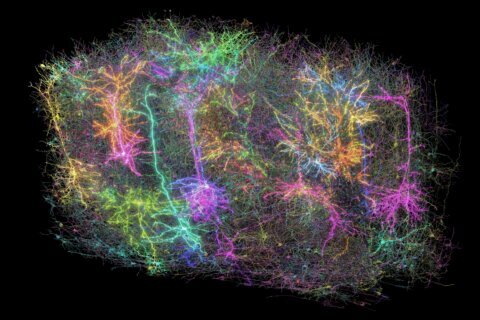ARLINGTON, Va. – Va. 7 between Alexandria and Tysons in Virginia is a heavily congested corridor with about 62,000 vehicles on a typical workday. Now a Transit Alternatives Study is underway to analyze how mass transit could help drivers.
“We want to figure out how to solve the congestion issue on Route 7. How do people who reside or work on Route 7 think we can solve the problem? Public input is important,” said Mariela Garcia-Colberg, project manager of the Route 7 Corridor Transit Alternatives Study for the Northern Virginia Transportation Commission.
“I totally understand it. I don’t like driving on Route 7. It is difficult to get from one place to the next. So this is why we want to do the study,” she said.
Among the options being considered are bus-rapid transit, rapid buses, light rail and streetcars.
Bus-rapid transit refers to buses with dedicated lanes that regular cars cannot use, thus bypassing normal traffic on the road.
Montgomery County, Md., is currently exploring a bus-rapid transit system as well. Public hearings on a bus-rapid transit network will be held in September. Rapid transit is often called BRT-lite (Bus Rapid Transit lite) with the same features, except no dedicated bus lanes.
Light rail and streetcars are similar in concept with overhead electrical connections and tracks for the trolley or train car to ride along. Streetcars typically ride with normal traffic, whereas light rail tends to have dedicated lanes or tracks.
One of the biggest challenges along Va. 7 is the right-of-way as there isn’t that much room left to widen roads or add new lanes for transit.
“The physical constraints are our biggest obstacle. In phase two, we will study whether there’s enough right-of-way to have dedicated lanes for some of these alternatives. We will do a deeper analysis of each mode, the costs of each, the environmental impact, and the impact to the communities in the area,” said Garcia- Colberg.
Typically, bus-rapid transit is far cheaper than light rail or streetcars because tracks and electrical equipment are not necessary.
Cost is at the center of the debate over the transit future along Columbia Pike in Arlington. Opponents argue that streetcars cost $250 million, whereas bus-rapid transit would cost only $50 million.
But supporters like Arlington Board Chair Walter Tejada believe streetcars will attract more passengers and spur economic development. Similar conversations will be likely over the next 18 months along Va. 7.
But Danny Cook of Oakton, Va., doesn’t believe dedicated lanes for buses, streetcars or light-rail trains is the right approach, even though he is frustrated about traffic on Va. 7.
“If you’re going to build a whole new lane of traffic, then why not open that up to everyone and eliminate even more traffic. It’s great to have a dedicated lane, but is it better than opening it up to everyone? I’m not sure it’ll have a big impact for drivers,” he says.
Fairfax County Board of Supervisors Chair Sharon Bulova agrees transit must be an integral part of the solution. She’s a member of the NVTC and most of the corridor in the study is in Fairfax County.
“The solution to transportation is a mosaic of solutions. We want to pull the pieces together, so that someone, for example, can use a rapid bus to get to the Silver Line,” she says.
“Every time we widen a road, anywhere in Fairfax County, we need to look at transit alternatives to see how they can help solve congestion.”
A public meeting will be held from 7 p.m. to 9 p.m. on Sept. 18 at the Skyline 7 building at 5275 Leesburg Pike in Falls Church.
A final report with recommendations could be finished in late 2014.
Follow @WTOPTraffic and @WTOP on Twitter.









